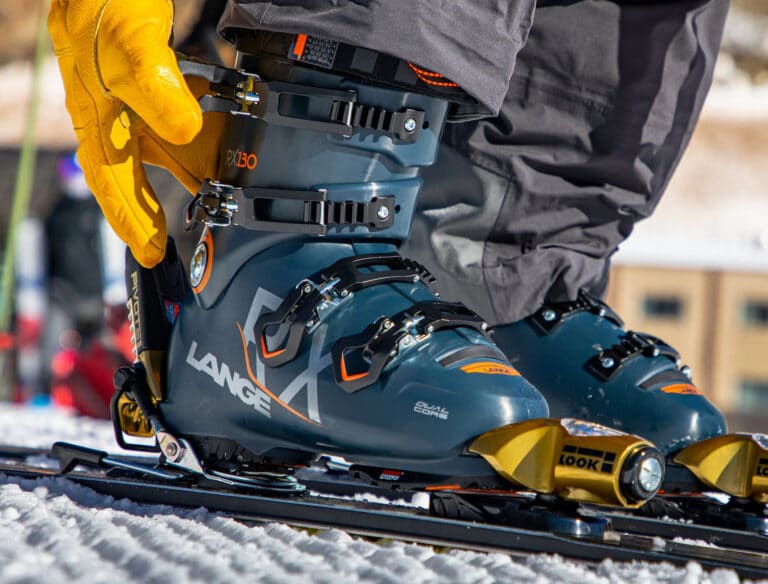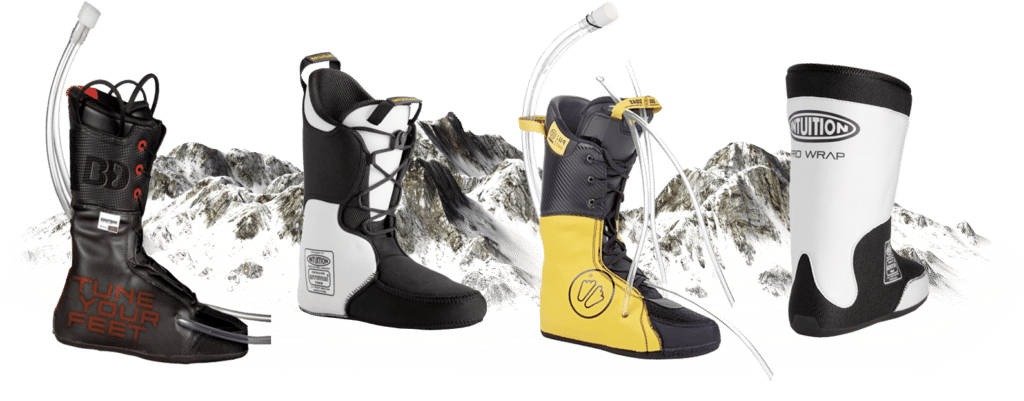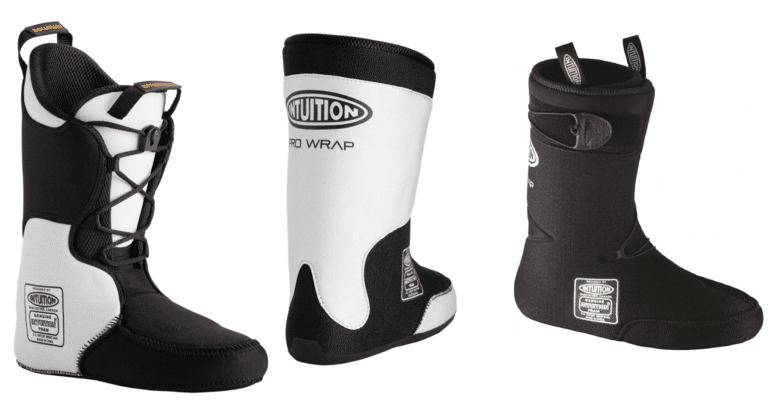the quest for perfection...
Every serious skier searches the best compromise between comfort and precision in their ski boots
ULTIMATEFIT is the final step in Mark’s perseverance and dedication to find the best liner in terms of fitting skiboots and the foot . For some, this still remains a grail. For others, this has come true, with a liner that really fits like a glove..
Welcome to ULTIMATEFIT liners

Since the mid 60’s, the skiboot manufactors have tried different solutions in order to provide the skiers a precise anatomical fit of their feet in the skiboot shell.
A quick glance at the different technologies throughout history:
Today’s technology has permitted to make ski boots in different flex stiffness to enable all ski enthusiasts to ski no matters what their level or ability. The ski carving stance has also revolutionized the ski industry. We don’t ski the same way as in the 80’s.
Some will say that pleasure is back instead of suffer …..I’ve been exclusively working on ski boots since 1977. Ever since, my goal has been to find the most appropriate solution to skiers no matter want their level was to be able to ski with the best fitted boot.
The first step has been with a Sidas footbed molded to my feet in 1977 in Banff.
The first revolution: I could feel the edges of my skis …
Then I just wanted to learn more find the logical solutions:
getting familiar fitting HANSON Avanti ski boot with the wax bladderas well as the SCOTT ski boots grinding the PE foam fitting customizing numerous feet and skiers.
Then came foam with a preference for SIDAS foam liners.
In 2005, ZIPFIT with a very easy fitting concept. The liner was made to match your forefoot, and the cork technology did allow the best solution: not too much compression on the soft tissue parts of the foot, but the liner could be precisely adjusted by adding or retrieving cork material from the bladders.
The thermoliners have revolutionized the industry. Perhaps one of the most versatile solution for manufacture wishing to offer an OEM liner . They became the benchmark, but with only a limited range of fitting solution for the performance and racing level.
Regarding the inner liner, the story is totally different
Since the mid 60’s, the ski boot manufacturers have tried different solutions in order to provide the skiers a precise anatomical fit to their feet inside the ski boot shell.
A quick glance at the different technologies throughout the history
Liner technology available today
Below are the pros and cons of each liner type based on my experience in the industry

1. PU foam liners
It remains the benchmark for the most serious skiers including the racers.
We all remember friends, ski pros and racers who skied with these liners.
The foam liner is built with two side bladders that are filled with a hardening chemical (PU) solution which fills the gaps between the foot and the shell. The fitting procedure could be described torturous. We loved the sport and were ready to suffer over it in order to enjoy our time on the slopes. During the late 80’s and 90’s I foamed an average 150 pairs of these liners per winter.
Today, this technology has become obsolete
1- Drastic changes forced to the chemical formulation (composition) on the back of regulatory changes (environment) in addition to low/lower production volumes.
The foam has become very sensitive to hydrometrics which means we don’t have the same foam structure as we did in the 90’s.
2- The shell volume of the boot has reduced over time is now more closely aligned to the foot meaning there is less room for the foam build up.
3- Lesser boot manufactures: some continue to live on the foam image.
4-Lack of qualified boot fitters who really understand what foaming technology is all about.
During the winter 20-21, I decided to stop fitting foam liners: I wasn’t satisfied with the results I could offer to my clients and therefore the foam stand is now dismounted and gathering dust in the storage. I’ve made my first foam injected liners in 1980. It has been a sad but essential decision…

2. Thermo liners
A relatively simple idea where a liner with a specific thermal construction is heated up in an oven, wrapped around the foot and then slid into the shell and let rest for ca. 10 minutes buckled up. Easy process invented by Rob WATT, INTUITION©, Vancouver Canada
This technology is being used by most of today’s ski boot manufactures. Thermal liners still produce miracles and make many skiers happy…
Pro’s:
1- lightweight. For this reason, thermals have become the benchmark solution for most ski touring, alpine(ski?) mountaineering, freeride and telemark boots
2- very easy to mold. Only a small a heat source is required and liners can be processed in 20 minutes
3- The PE and EVA foam features enable the liner to mold to the shape of your feet inside the shell
4- very short drying time after use compared to a standard liner
Con’s:
1-the liner must be properly molded by a trained boot fitter
2-Not the best solution for aggressive skiers and/or for racing shells

3. Cork Technology liners
Cork is one of the first materials used in the ski boot industry in the effort to provide moldable padding properties to the ankle area with the first experiments dating back all the way to the 1960’s. Cork technology continues to be prominent and is found in most race-performance liners. As defined by its name in this technology cork shaving are mixed with a low grade silicone compound which enables the material to spread itself around to where it is needed inside the bladder/liner when heated. The compound stiffens at low/ambient? temperatures. The compound doesn’t move or pack down over time.
This is a boot fitter’s delight
material can be added to and removed from the liner as needed, allowing them also to be remolded into a new shell.
A great number of skiers have already been able to enjoy liners using this technology: Zipfit liners (USA) by Sven COOMER

